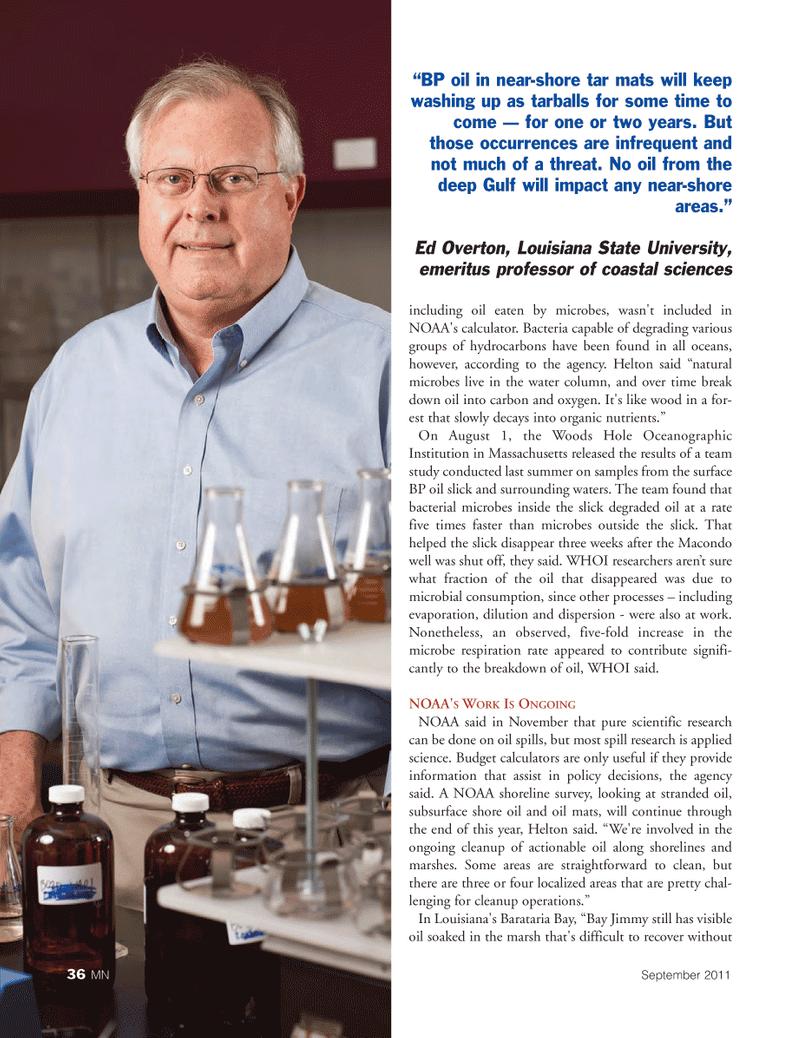
Page 36: of Marine News Magazine (September 2011)
The Environmental Edition
Read this page in Pdf, Flash or Html5 edition of September 2011 Marine News Magazine
including oil eaten by microbes, wasn't included in NOAA's calculator. Bacteria capable of degrading various groups of hydrocarbons have been found in all oceans, however, according to the agency. Helton said ?natural microbes live in the water column, and over time break down oil into carbon and oxygen. It's like wood in a for- est that slowly decays into organic nutrients.? On August 1, the Woods Hole Oceanographic Institution in Massachusetts released the results of a team study conducted last summer on samples from the surface BP oil slick and surrounding waters. The team found that bacterial microbes inside the slick degraded oil at a rate five times faster than microbes outside the slick. That helped the slick disappear three weeks after the Macondo well was shut off, they said. WHOI researchers aren?t sure what fraction of the oil that disappeared was due to microbial consumption, since other processes ? including evaporation, dilution and dispersion - were also at work. Nonetheless, an observed, five-fold increase in the microbe respiration rate appeared to contribute signifi- cantly to the breakdown of oil, WHOI said. NOAA' SWORKISONGOINGNOAA said in November that pure scientific research can be done on oil spills, but most spill research is applied science. Budget calculators are only useful if they provide information that assist in policy decisions, the agencysaid. A NOAA shoreline survey, looking at stranded oil, subsurface shore oil and oil mats, will continue through the end of this year, Helton said. ?We're involved in the ongoing cleanup of actionable oil along shorelines and marshes. Some areas are straightforward to clean, but there are three or four localized areas that are pretty chal- lenging for cleanup operations.?In Louisiana's Barataria Bay, ?Bay Jimmy still has visible oil soaked in the marsh that's difficult to recover without ?BP oil in near-shore tar mats will keep washing up as tarballs for some time tocome ? for one or two years. Butthose occurrences are infrequent and not much of a threat. No oil from the deep Gulf will impact any near-shore areas.? Ed Overton, Louisiana State University,emeritus professor of coastal sciences36MNSeptember 2011MN#9 (32-49):MN 2011 Layouts 9/6/2011 12:19 PM Page 36

 35
35

 37
37
